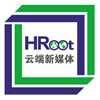| Summary: |
The recruitment of young employees determines who we are in the future. Managers must be acutely aware of this fact and adapt themselves to the needs of their Generation-Y employees. |
| Background: |
Such is a highlight of the changes that medium and senior management is facing: In addition to a changing market, the workforce that creates value for organizations is becoming younger. It is unavoidable for management to cope with, adapt to and even embrace the changes. |
| Subjective: |
The course introduces the features of Generation-Y employees, their backgroundand the best practices of interactions with these people. It seeks to help managers to maximize the potentials of Generation-Y employees to fuel the sustainable development of the organizations. The cases can also help managers develop a complete picture of change management and the processes of practice. A course in one day. |
| Time & Venue: |
Sept. 12th, 2012 Shanghai World Financial Center, Conference Hall, 3/F, 100 Century Avenue, Shanghai |
| Cost: |
RMB1800/person, including lunch, teaching materials, paper and pencil, certificate, and tea break |
| Lecturer: |
 Freedom Zhu, columnist of Human Capital Management magazine, partner of Allpku Freedom Zhu, columnist of Human Capital Management magazine, partner of Allpku
Freedom is a senior training and consulting advisor, a partner of Allpku, formerly the Marketing and Government Relationship Director of Randstad; he is known for his rich experience in human resources and marketing.
|
| Syllabus: |
Basics: Who are Generation-Y employees
1. Profile of Generation-Y employees
• Apple girl
• College magistrate
• Hip-hop troupe of migrant workers
• Lala
2. Social features of Generation-Y
• Materialistic traits
• Direct-, short-term-orientedness
• And more......
Topics: Why use Generation-Y employees?
1. Re-examine the employment strategies of your organization
2. Know the employment trends from Generation-Y
3. Know own position
4. Pinpoint the contradiction |
Focus: Why is Generation-Y affixed with tags?
1. Re-consider the assessment standards of management
2. Historical cases of mentality change
3. Where are the blind points?
Case Study: Innovative practices of SOEs, overseas and private enterprises
1. Case of management practice
One Step Further: Self-improvement and practice of managers
1. Trust: Build trust in Generation-Y employees
2. Experience: Experience-oriented managerial behavior adjustment
3. Communication: Flat communication and organizational structures |
|
 Freedom Zhu, columnist of Human Capital Management magazine, partner of Allpku
Freedom Zhu, columnist of Human Capital Management magazine, partner of Allpku


